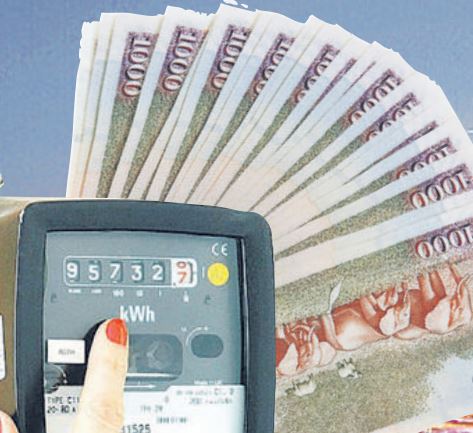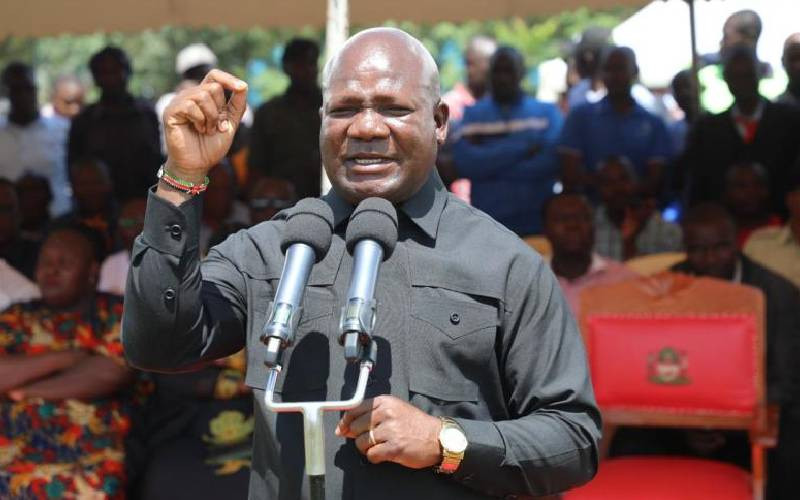
The promise of cheap electricity might never come to pass. This is evident in the billing structure unveiled Monday by the Energy Regulatory Commission (ERC), which has increased the cost of power.
This is despite numerous promises by authorities that power prices would come down. And it is perhaps a reality check that despite the promises by the Government, including by none other than President Uhuru Kenyatta, that power prices might never come down.
It is also against heavy investments that the country has made in power generation from renewable sources as well as transmission infrastructure.
Among the factors identified as key in retaining high electricity prices include capacity charges for power plants whereby consumers pay a charge whether the plants are producing electricity or idle.
Consumers will also continue shouldering major inefficiencies in the power industry, where for instance power transmission losses stand at about 20 per cent against the global average of under 10 per cent.
Power utilities are also accused of inexplicably high operating costs as well as the fact that nearly all players in the electricity sub-sector are embroiled in major scandals, with officials accused of dishing out billions to suppliers in suspect deals, the cost of which is usually borne by the consumer.
The new tariffs have elicited anger from different industry players and domestic power consumers, all of whom are of the opinion that they have gotten a raw deal.
They are also of the view that the power prices review process that has been in the making for four years now and taken through a rigorous stakeholder consultation process in the recent months may not have been of any value.
Patrick Obath, the managing consultant at Eduardo and Associates, an energy consultancy, noted that the capacity charges are among the major bottlenecks that would keep up power prices and which the new tariff would not have addressed.
These are contained in the Power Purchase Agreements (PPAs) signed between electricity generating firms and Kenya Power.
“Some of the key factors that make the cost high include the capacity charge that sits whether for instance thermal plants are running or not. Even with the investments in renewable energy which will bring the cost down, we still have the capacity charges for the thermal plants which have not been removed because their PPAs are still in place and will still be there up to about 2030,” he said.
“The promise of cheap electricity has not been achieved because the Government has not removed this structural bottleneck and until such a time when this is addressed, that promise to consumers will not be achieved even with the coming in of new generation capacity from renewable power sources.”
Eng Obath, also a board member of Federation of Kenya Employers, noted that without addressing the structural issues that have over time sustained high power prices, efforts to reduce the cost would amount to nothing.
“The disappointment to the consumer is because the root cause of the high cost of power has not been addressed. What we have seen is a window dressing and not what we had expected as an organisation (FKE),” he said.
Stay informed. Subscribe to our newsletter
The survival of power generating firms is usually guaranteed through long-term power purchase agreements with Kenya Power, some going for as many as 25 years.
This means failure to review their terms will keep up prices of power not just now but also in the long term. The contracts require consumers to pay even in instances where they are not producing in what is referred to as fixed capacity charges.
Thorny is the thermal power plants that have to be paid these capacity charges even in instances where they operate at minimal levels.
New electricity generating capacity from cheaper options such as geothermal, wind and solar coming on board would ensure little or no reliance on thermal power but consumers will continue paying them past 2030.
The earliest some of the contracts for thermal power producers expire is 2023 when Tsavo Power’s 23-year-old and Rabai Power’s 15-year-old agreement lapses. Gulf Power, Triumph Power and Ibera Africa’s contracts expire after 2031.
An exercise to review their terms that started by the Energy Ministry in 2016 has not seen much progress, with the team put together to review their contracts yet to give a report.
Under the new tariff, the Kenya Association of Manufacturers said the cost of electricity for industry would go up by 18 per cent, despite the assertion by ERC that the overall cost of power for manufacturers would go down by 4.4 per cent.
Sachen Gudka KAM Chairman last week told a trade conference the new base tariff had risen by as much 36 per cent. The increase is only tamed by the reduction in power bill variables such as fuel and foreign exchange adjustments factored in the power bill and even then, the increase would stand at 18 per cent.
The variables went down in the new tariff but these are also volatile and movements in prices of oil, weakening of the shilling against major currencies or rising inflation has the effect of pushing them up and subsequently the cost of power.
KAM had done an analysis on the new tariffs before they came into effect and warned that it would push up the cost of manufacturing. The manufacturers’ lobby maintains that power costs for factories would go up.
“The existing base tariff rate average at Sh14.9 for small commercial and industrial consumers. The proposed tariff will lead to an average of Sh16.15 per unit, without considering variable fuel cost. This represents an average base tariff increase of 18.5 per cent,” said KAM in an analysis.
KAM noted that among the factors responsible for high bills included failure by the power utilities to have proper controls that would, for instance, minimise power losses during transmission as well as ensure spending on operations was contained.
“There is need to have Kenya Power find other ways of meeting their revenue requirements including reducing the transmission and distribution losses and operational cost,” said KAM.
“We also note that in the financial year 2016/17, Kenya Power operating expenses on salaries for the network management staff increased from Sh2 billion to Sh4.5 billion.”
Inefficiencies in the power sector have also been fingered as among the causes of high power prices.
“Quality of supply remains a major issue to manufacturers… a manufacturer in Kenya today would tell you that approximately 10-15 per cent production loss is due to power outages, quality and voltage fluctuations. If KPLC improved on quality and reliability of supply to manufacturing to improve productivity by 10 per cent will translate to improved revenues to the tune of Sh60 billion,” said KAM.
“These are the low hanging fruits for Kenya Power instead of taking away the promised lower tariff rates and keeping energy costs high.”
Despite the tabulations by manufacturers that showed that the cost of power would go up under the new billing regime, ERC said the net impact was a 4.4 per cent reduction.
“Commercial and industrial consumers on average will get a reduction of 4.4 per cent,” said ERC when it published the new tariff Monday.
The regulator added that most of the power plants being commissioned into the system are renewable technologies with no fuel pass-through costs.
“In addition to the non-fuel cost component will also be mitigated by the envisaged savings from the decrease in the dispatch of medium speed diesel plants that will be replaced by the renewable energy plants expected to be commissioned soon.”
Lawyer Apollo Mboya on Thursday filed a case seeking to stop Kenya Power from implementing the new tariffs.
In court papers, the lawyer argued that the ERC and Kenya Power had during the stakeholder consultations undertaken in July told Kenyans the cost of electricity would come down with the new tariff while in reality, it had increased for households and small businesses.
Mr Mboya claimed the national power supplier intended to recoup Sh10.1 billion in backdated electricity bills despite court orders issued seven months ago. According to Mboya, household consumers will shoulder the burden of the inflated bills while bulk consumers will be exempted in the new tariffs.
“The new tariff structure discriminates a significant majority of the domestic consumers and favours the minority bulk power consumers. In order to hoodwink the domestic consumers, the second respondent (ERC) has massaged the blow of the increase by dropping fixed monthly charges of Sh150,” the lawyer claimed.
[email protected]
 The Standard Group Plc is a
multi-media organization with investments in media platforms spanning newspaper
print operations, television, radio broadcasting, digital and online services. The
Standard Group is recognized as a leading multi-media house in Kenya with a key
influence in matters of national and international interest.
The Standard Group Plc is a
multi-media organization with investments in media platforms spanning newspaper
print operations, television, radio broadcasting, digital and online services. The
Standard Group is recognized as a leading multi-media house in Kenya with a key
influence in matters of national and international interest.
 The Standard Group Plc is a
multi-media organization with investments in media platforms spanning newspaper
print operations, television, radio broadcasting, digital and online services. The
Standard Group is recognized as a leading multi-media house in Kenya with a key
influence in matters of national and international interest.
The Standard Group Plc is a
multi-media organization with investments in media platforms spanning newspaper
print operations, television, radio broadcasting, digital and online services. The
Standard Group is recognized as a leading multi-media house in Kenya with a key
influence in matters of national and international interest.









